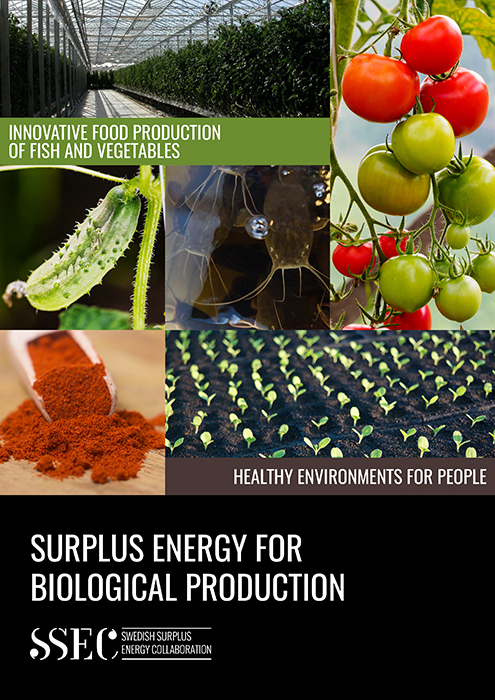Håkan Sandin and Bengt Persson from SSE-C Swedish Surplus Energy Collaboration reveal their thoughts on innovative food production, as well as the importance of energy efficiency for both the industry and community
The authors share their perspective on the innovative production of food such the aquaponic production of tomatoes and fish in Härnösand. The authors also write about their expertise on energy efficiency, including how both the industry and community can make the best use of the resources available to them, including a patented technology solution that does just exactly that.
Food production
Amongst the many other insights offered here, we find out about investment in fish farming within the industrial area, Bränta Ljusdal in Sweden. Encouragingly, this gives the village in question 20–30 new jobs with the possibility of much more, in the long run, we are told.
In another piece, we learn about a place called Härnösand, in the northern part of Sweden, where you can probably find Europe’s largest (4000 square meters) true aquaponic production centre for tomatoes and fish. One thing we find out – is that one of several approaches to the Härnösand municipality’s environmental and sustainability efforts is to create conditions for reducing climate impact from food consumption – which this network can certainly contribute to.
In an exciting piece of news, we discover how the firm Foodhills takes over Findus plant in Bjuv from March this year, with the aim of building an innovative centre to produce food. We also find out that the agreement opens possibilities for future cooperation in research and development between the two companies.
In a short, yet compelling interview with SSE-C’s Håkan Sandin, he highlights the tremendous waste apparent in terms of food both eaten and produced in Sweden. He also tells us that there is a tremendous need for innovation where food is concerned – production in-house is part of the solution, he argues to meet the demand for it. In his own choice words, he goes on to expand these sentiments further: “SSE-C establishes new food infrastructure and new energy-efficient companies throughout Sweden and develops sustainable circular production systems for fish and vegetables.”
Energy efficiency
One of the questions answered in this in-depth publication is how we can economically take care of the very large amounts of residual heat that are today cooled off in various industrial processes.
In a revealing piece, we are told that energy efficiency is part of the company Veolia’s DNA, where they are focused on helping both the industry and community to use the resources at their disposal in the most optimal way. We find out how their 330-strong research department is constantly pushing the boundaries forward, enabling them to further reduce the use of fossil fuels, as well as recycling energy streams.
If all that wasn’t enough, then we go on to find out that in modern cities today, there is enough thermal energy flow generated by human activity to provide the base for both heating and cooling of an entire city, according to the company ectogrid™. The patented technology solution offered by this company ensures that energy is used in the most efficient way possible, we learn.
To round things off, Sweden’s Minister for Policy Coordination and Energy, Ibrahim Baylan speaks to us about the importance of having a sustainable Swedish energy policy in the country. He underlines the importance of a sustainable Swedish energy policy and he reveals that The Government of Sweden has set a target for the country to become the first totally fossil free welfare society.


